Audient iD24 review: Revamping a reliable formula for quality recording and playback
Audient replaces its stalwart, popular iD22 interface with a more compact and fresher-looking iD24. We compare feature sets of the two and put the latest iD through its paces in the studio.
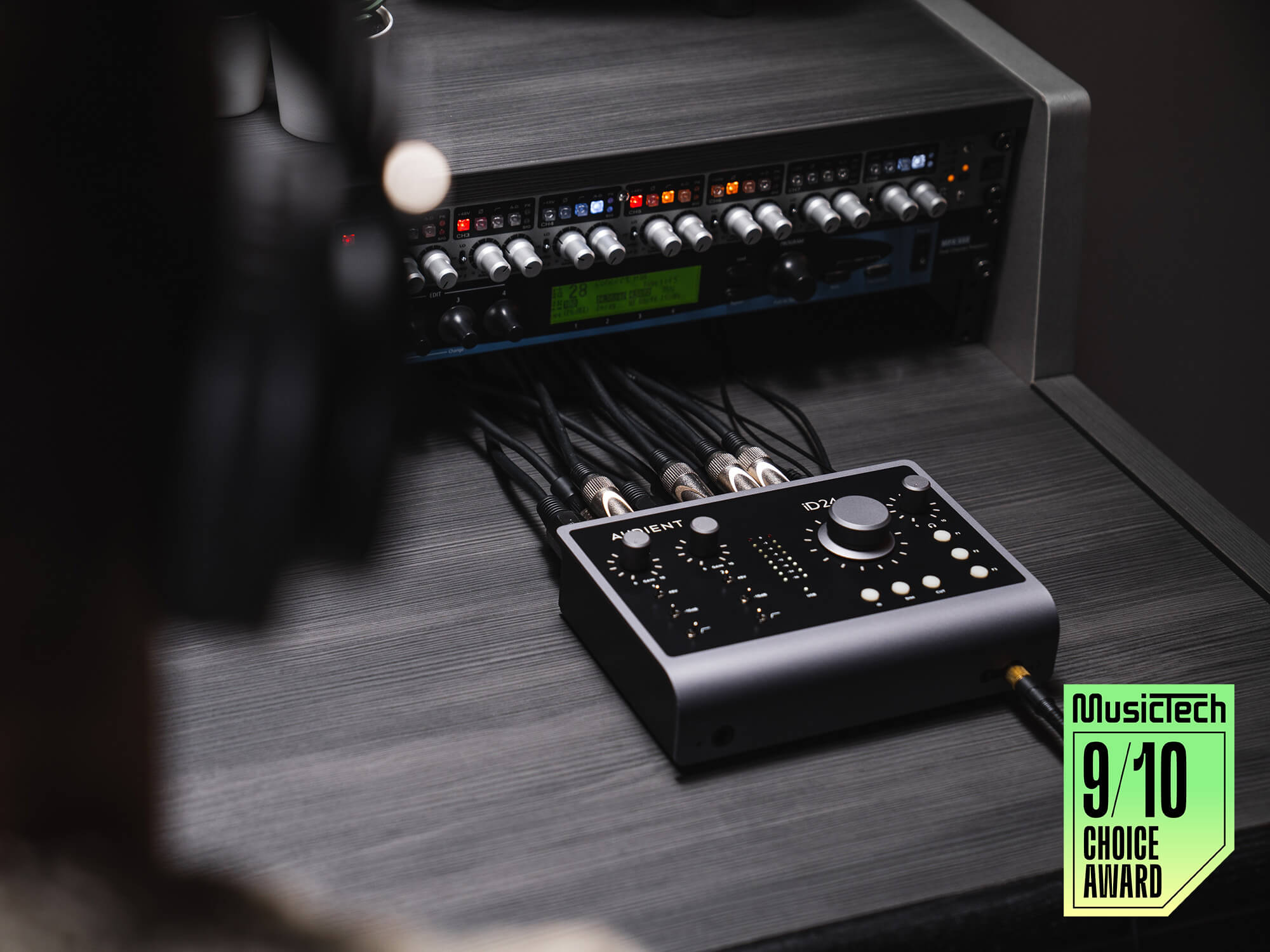
Review Overview
Our rating
9
Our verdict
⊕ Flexible insert points
⊕ Articulate, high dynamic range converters
⊕ Ease of use
⊕ Assured build quality and compact size
⊕ Bus-powered
⊕ Comes with a USB-C cable - hooray!
⊖ iD control software has limitations
⊖ Single ADAT bank places limits on number of channels at 96kHz
⊖ Input activity LEDs would be welcome
Ten years ago, analogue mixer manufacturer Audient made its first move into the audio interface market. Sold as an interface and monitor controller, the iD22 quickly won fans for its console-grade preamps, ease of use, quality converters, and series of function buttons, allowing quick access to main/alternate monitor switching, talk back, mute/dim and more. Its expandability was also a key selling point, with an ADAT in/out on board, plus a balanced insert point on each of its two preamps.
Since then, the range has expanded to include the iD4, iD14, iD44 (including MKII models of the latter two), all differentiated with the number of preamps, line outs and ADAT ports. The new iD24 sits below the flagship iD44 MKII with four preamps and dual banks of ADAT in/out. With quality and expandability at their core, Audient’s audio interfaces are a popular choice for both musicians and producers – will the iD24 prove as impressive?
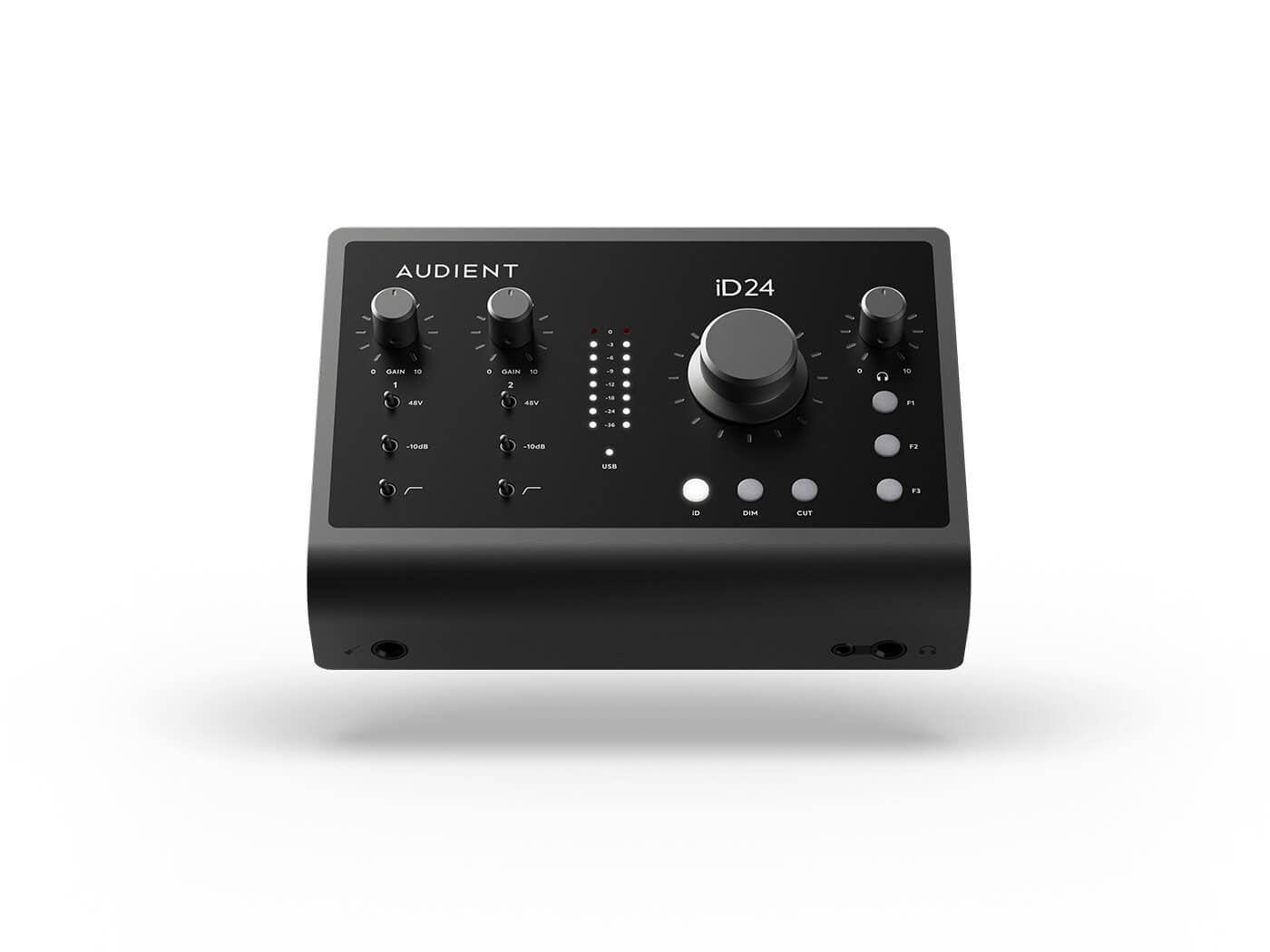
The ins and outs of it
The iD24’s features are largely unchanged from those of the iD22, with two preamps on the analogue input side (one of these is assignable as a JFET-equipped instrument input), plus four line outputs to feed two pairs of monitors. Balanced insert points on TRS jacks let you patch outboard gear into the input chain, or use the return path to hit the A/D converters at line level without passing through the internal preamp. In the digital realm, there are ADAT in/out and wordclock out.
The maximum sample rate remains unchanged at 96kHz and so does the USB protocol. Despite taking advantage of the USB-C’s connector to provide adequate bus power to the interface, transmission is capped to USB 2.0 speeds. However, this is not uncommon for audio interfaces, even much larger ones, and we find the latency levels to be acceptable when triggering virtual instruments or running a DI guitar through an amp plugin.
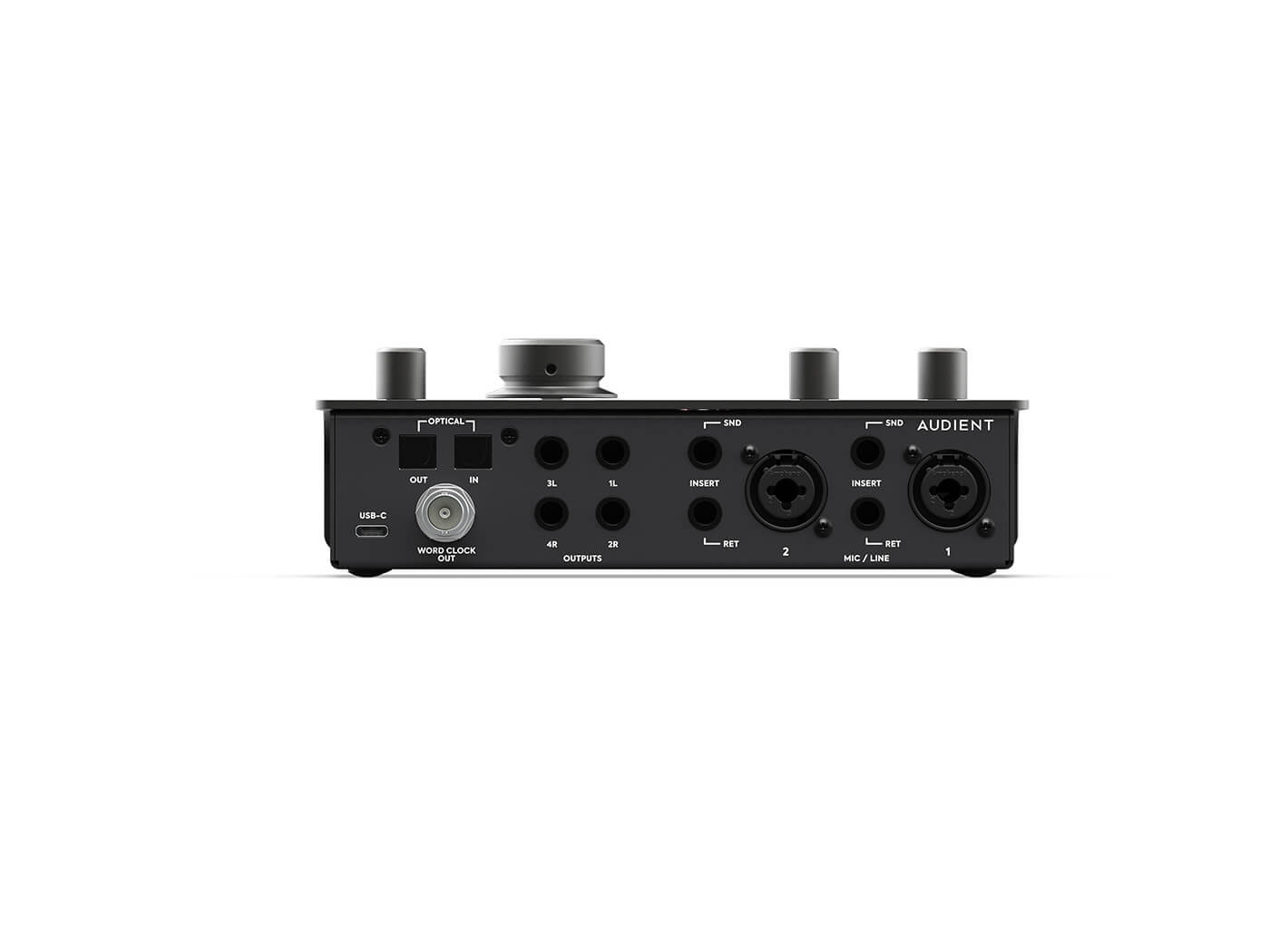
Embracing differences
A sleek, dark grey finish to match the range’s more recent releases is on show here, along with a significantly smaller case. Plus, bus powering means a wave goodbye to the clunky external power supply. Its converter chips are now the same as the iD44 MKII, with impressive specifications all round. Updated, illuminated switches also assist the makeover, while the instrument DI input and headphone sockets are relocated to the front to make things more ergonomic than the iD22’s (admittedly professional looking) rear panel location.
Dual, parallel headphone outs are now present; most handy if both sets of headphones have similar sensitivity. You cannot have separate headphone mixes or even different levels for each, but nevertheless, it’s a compromise that doesn’t require additional preamps/conversion for the manufacturer to implement.
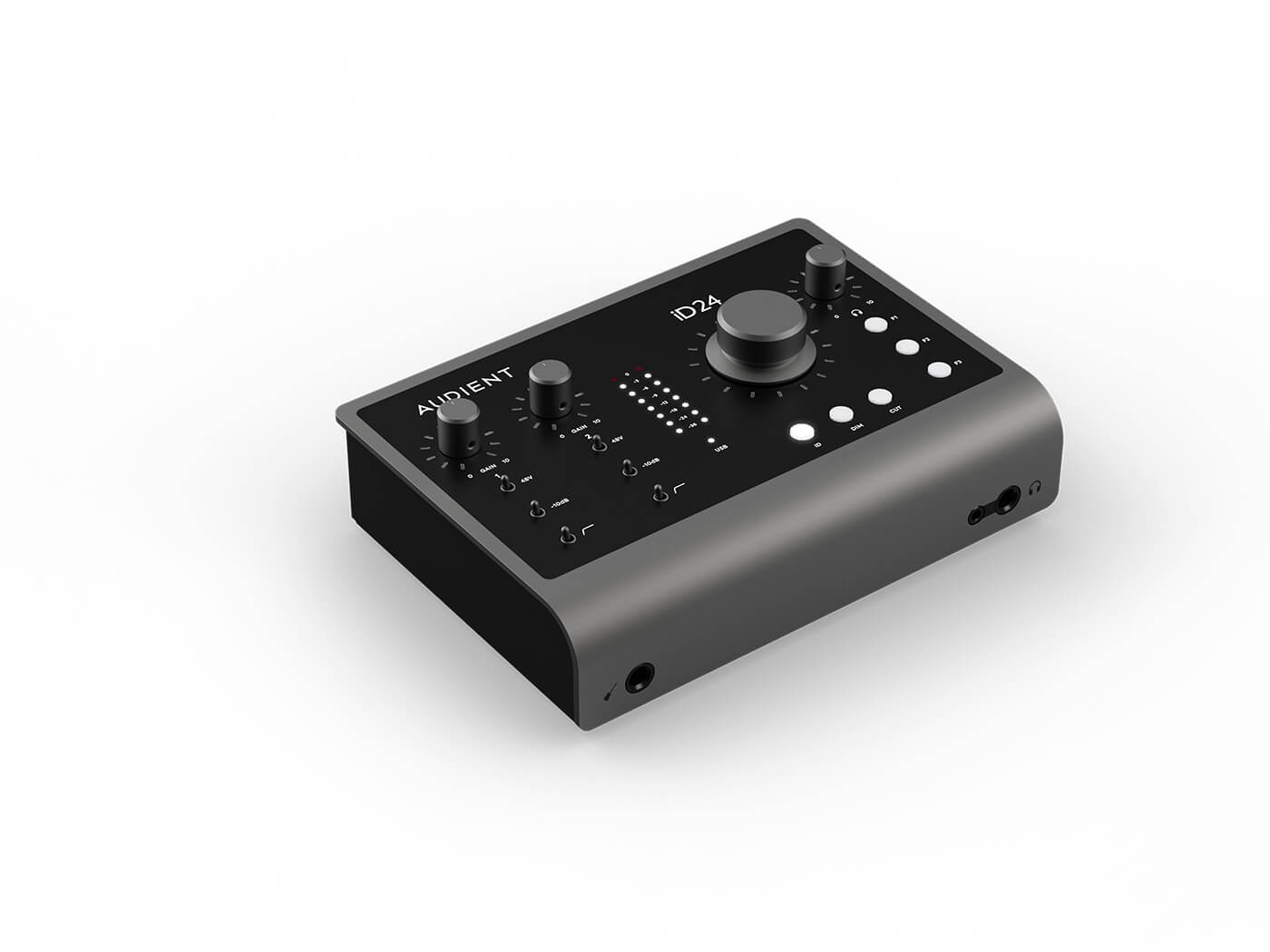
You might welcome the longer LED meter ladders for output monitoring but, just like the iD22, input activity LEDs are a slightly frustrating omission. Additionally, Audient axed the polarity switch on preamps. While this did previously lend a professional ‘studio’ feel to the hardware controls of the iD22, the function is still accessible in the accompanying iD control software.
Talking of the iD software, more recent versions have a muted, dark look and now include a more flexible approach to talkback mic assignment, where any connected microphone/input can be assigned to talkback – e.g. a laptop internal mic – leaving the interface preamps free for recording.
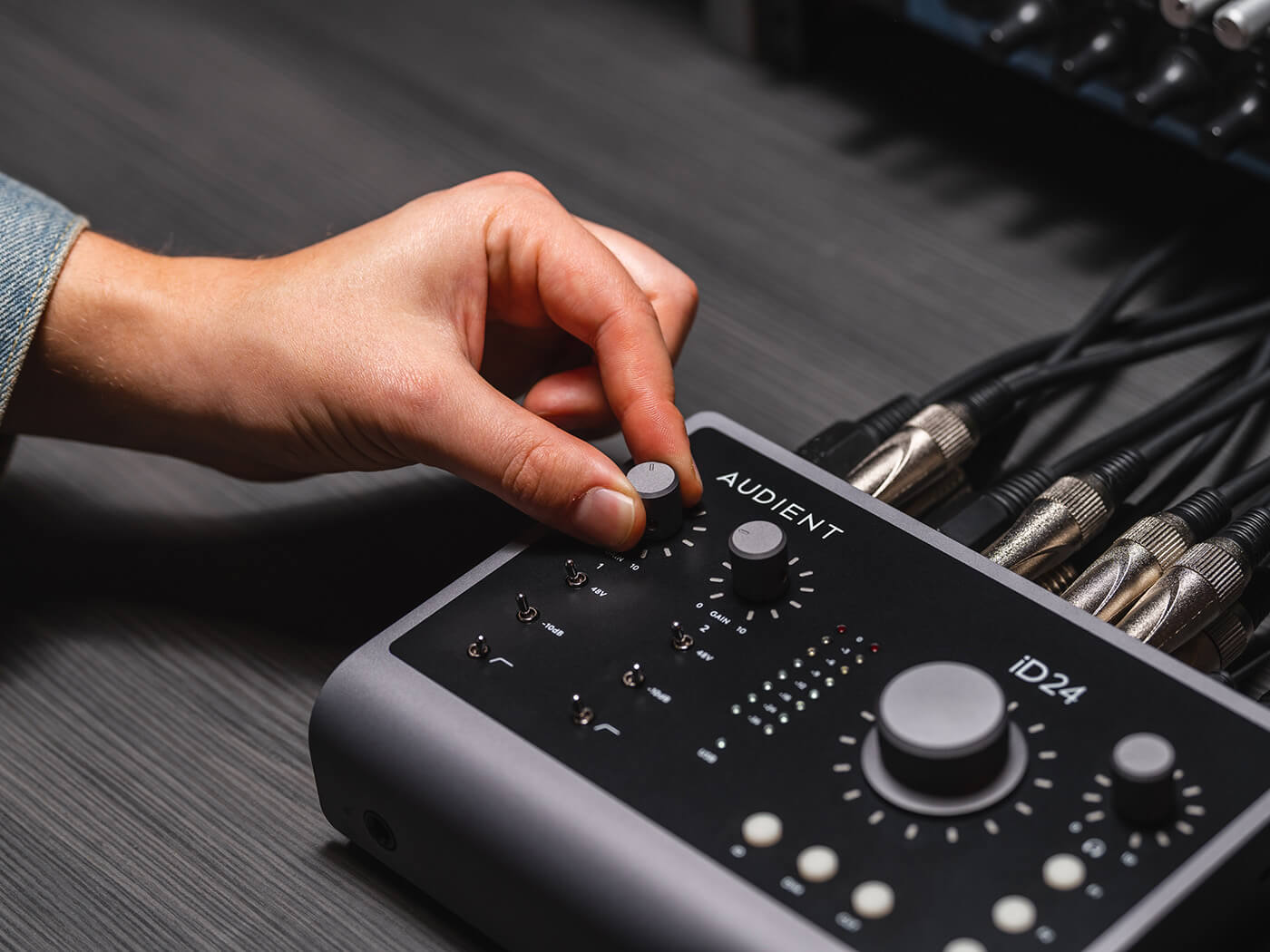
Getting a workout
In session, the iD24 impresses with its clean preamps and articulate converters. Topping out at +58dB, there’s slightly less preamp gain available than its forerunner, but enough to cope with the likes of our Shure SM7B when cranked up, without encountering noise or headroom issues.
The iD software is straightforward to use, but does require some pesky horizontal scrolling when you’ve got digital ins and outs on the go. It’s easy to get foldback mixes set up and function buttons on the top panel assigned to your preferred monitor controller functions by way of a right click. We find the behaviour of the mute buttons odd and we’d prefer a way to mute input signals so microphones are not live when listening back to takes (the buttons only mute the signal for the main mix). In a similar vein, we also missed the advantage of the smaller iD14 MKII’s hardware controls, where you can click and hold the rotary encoder to swiftly mute the headphone feed when switching to monitors. Perhaps there might be some scope in the future for more flexibility in function button programming, so these things become possible.
Although we’d ideally have a proper second headphone output/preamp, the parallel sockets work well for times when you don’t have the little-to-big adapter to hand, or at a push, when you need two pairs of headphones for tracking (e.g. performer plus engineer in a single room set-up).
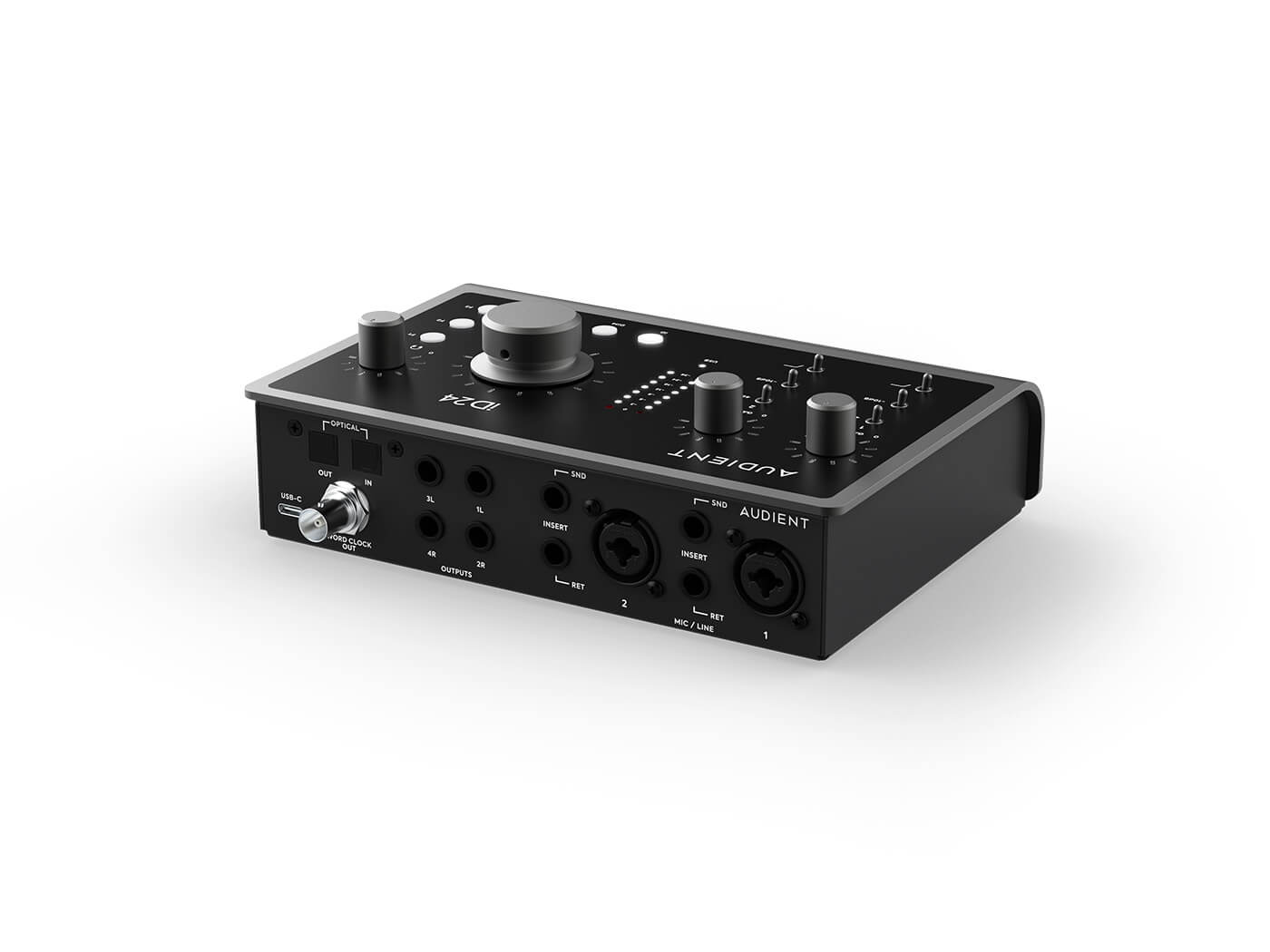
Insert points are a big plus for our workflow, but we perhaps don’t always use them in the most obvious way. Since Audient’s are half normalised, you can split the incoming signal off from one channel to be processed by analogue outboard, and then back to the return (A/D converter) of the second channel. This means our EQ and dynamics chain can be auditioned in the headphones, making the performer feel more confident and comfortable, and both the raw/unprocessed and the processed signals can be recorded for more flexibility later on. This is manual work, but incredibly tactile and satisfying; you don’t always need flashy DSP add-ons to get the job done and can start experimenting with some analogue processors to expand your horizons. External mic pres can also be tapped straight into insert returns without being coloured or re-amplified by the internal preamps – a neat, professional touch that most interfaces of this size lack.
Expandability-wise, the interface has nearly everything you could wish for – the wordclock out being a major advantage as it’s easy to set an interface as the master clock and have external gear follow along. It’s a shame that there aren’t dual ADAT banks though, in order to secure the maximum number of channels at sample rates above 48kHz, and this limits the iD24’s potential for use in a location/mobile recording situation, where you might wish to record eight extra inputs at the maximum possible quality.
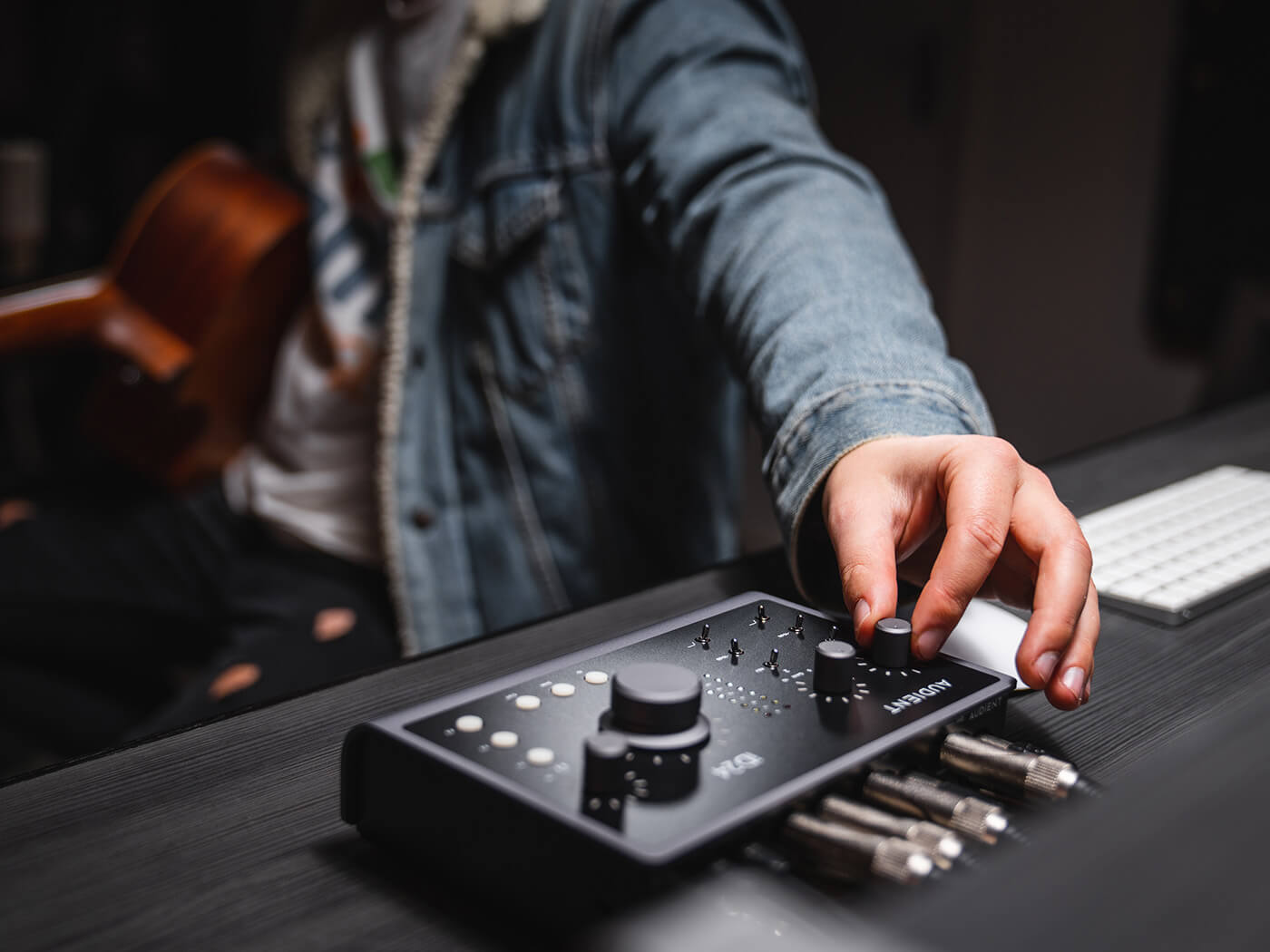
That little bit extra
Audient has impressed us with the accompanying ARC software bundle, with a starter version of Cubase on offer, a few software instruments, an amp simulator, plus a six-month free trial of Sonarworks for speakers and headphones. Sonarworks is a revelation for squeezing the full potential out of more modestly priced drivers and less-than-ideal acoustic settings – it’s therefore great that purchasers get to try this out for an extended period before purchase. Rounding up the bundle are a handful of useful video tutorials for beginners and improvers alike from Produce Like a Pro.
To sum things up, we’d have loved to have seen a few extra bells and whistles to really elevate the iD24 up above the outgoing ‘22; basic input metering, a fully-fledged second headphone output, or even a re-amp output, for example. Despite the update being an evolution rather than a revolution, the iD24 is an interface we’d heartily recommend, particularly if recording quality matters to you and if future expansion (extra inputs, analogue outboard etc) is a possibility.
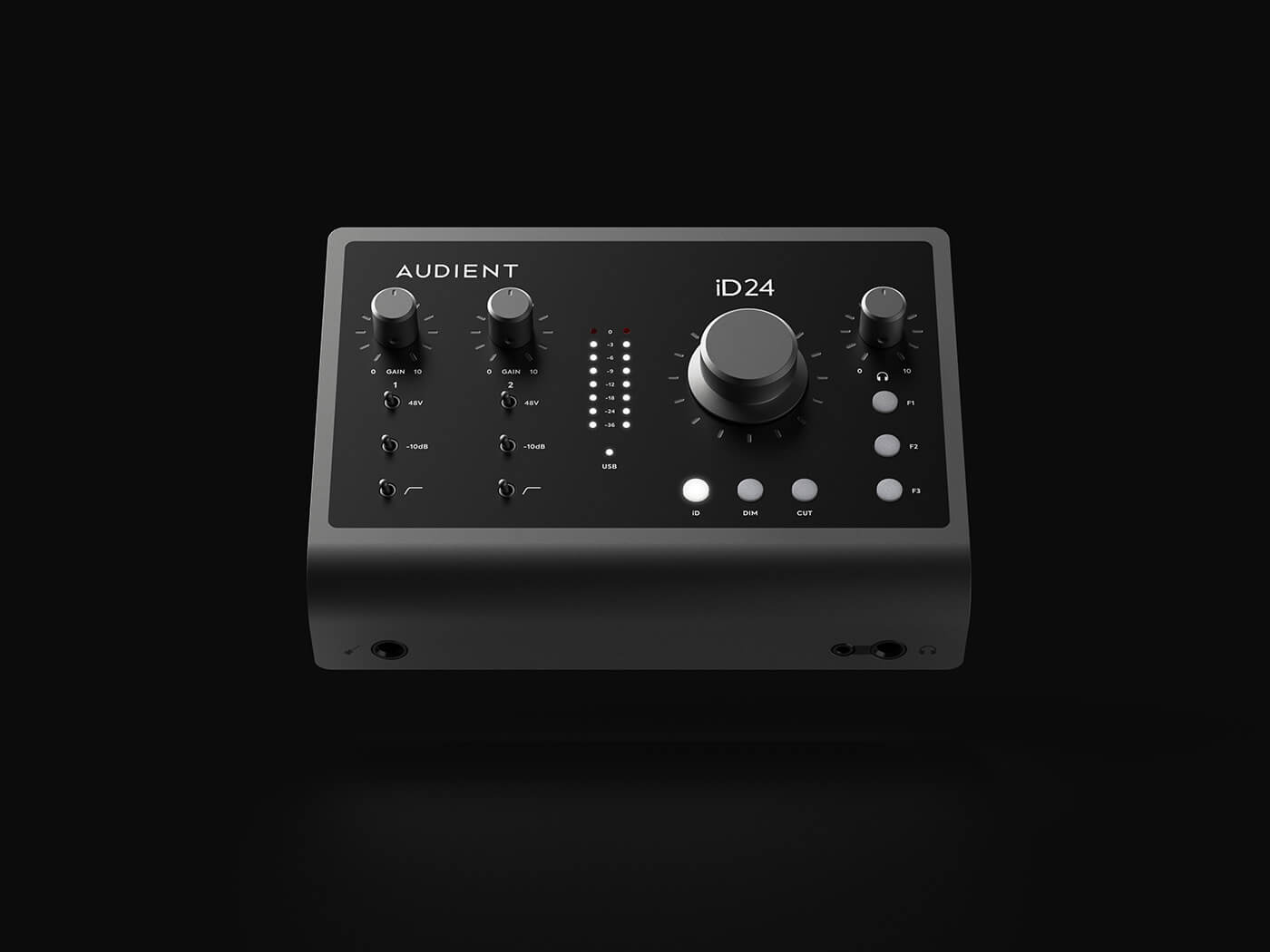
Key Features
- USB-2.0
- Bus-powered
- Recording qualities up to 24-bit/96kHz (ADAT in/out limited to 4 channels at 96kHz)
- 2 preamps with 58dB max gain (as found in Audient ASP console/preamp series)
- Balanced insert point on each preamp
- 1 JFET instrument/DI input
- Individual phantom power, pad, high pass and (software-controlled) polarity flip
- 4 line outs (for main and alternate speaker pairs)
- Monitor controller/function buttons
- 1 headphone preamp with 6.3mm / 3.5mm parallel sockets
- ADAT in/out
- Wordclock out
- Loopback
- Comes with USB-C cable and ARC software bundle
- £299 / €349 / $399
- Contact Audient
- Buy: Andertons, Bax Music